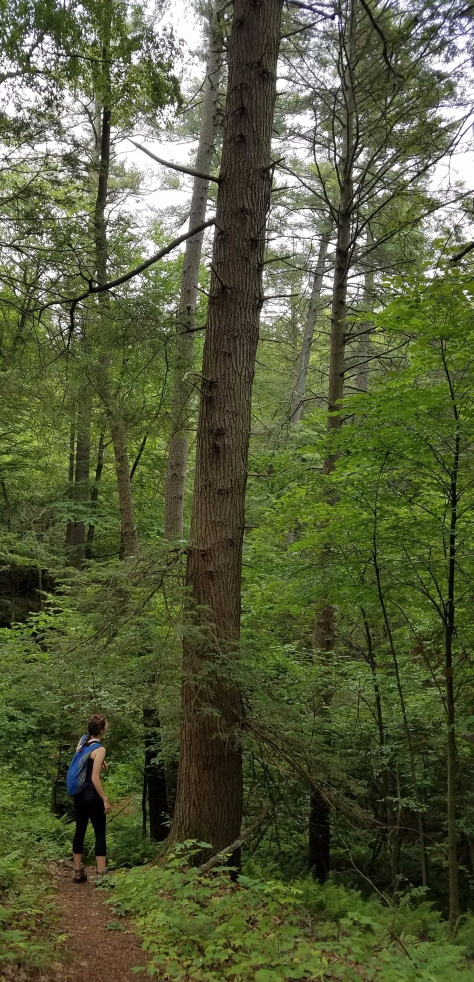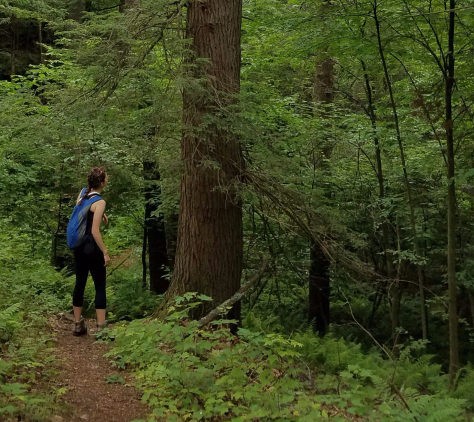SERVE OUR LAND AND SEEK ITS LEGACY
The National Park Service is not just about preserving wilderness, hiking rural trails, or providing the quintessential American road trip. The Service – through preservation, interpretation, and collaboration – provides visitors a space to compose their own journey, from the past into the future. It is by far impossible to fully comprehend another person’s perspective or life story; however, public spaces allow people to share experiences and build an understanding together. The integrative qualities of the landscape may be subtle or awesome, but nevertheless make profound impacts on our lives.
I was reminded this week of the five tenets that guide the Designing the Parks experience: respect place, engage all, model sustainability, design beyond boundaries, and communicate clearly. I thought deeply on these principles; both, their application during my internship, and their application in my career.

Respect Place
Respect, like preserve, is both descriptive and prescriptive. Initially the word might elicit a flashback to your childhood and the morals you learned then. (Make sure to give up your seat to your elder!) I like to think that ‘respect’ encompasses not just what you should do, but what you can do. You have the ability to express your gratitude and pay it forward.
Looking ahead beyond this summer, I acknowledge the fact that I feel subjectively connected the land and inherently separate simultaneously. (Now, how does that work?) I feel that my impacts – both good and bad – extend beyond my own experience; and therefore, my actions respect each conceivable impact.

Engage All
This is one of my favorite principles because it is both a virtue and an ultimatum when working collaboratively. I quickly learned during my undergraduate career that group work was essentially ‘real-life’ training. No single person is able to know every fact, understand every perspective, or excel at every skill – that is completely ludicrous. But when you include every voice, you (collectively) imagine what you are capable of!
Collaboration is why I have chosen to remain in school and pursue studies in historic preservation. (Landscape architecture is often considered to be interdisciplinary field that incorporates plant science, earth science, design, psychology/sociology, architecture, and history. But after graduation, I felt that there were more leads to follow and connections to be made.) A landscape architect or preservationist has a voice to contribute to every conversation. I often feel that it would do the country wonders to have more preservationists in politics. Imagine that!

Model Sustainability
Sustainability; now that is a buzz-word that I have heard thousands of times. But all in all, it boils down to a really important message: take only what you can give in return. Just because you can does not mean you should.
Right now, our world faces a lot of concerns, especially climate change/uncertainty/resilience. With ever-advancing technology, we have the tendency to look back and shame our past actions and choices. And while we might feel that acknowledging our past mistakes make their future impact less harmful, progress lies in the actions we take moving forward. As an intern, I feel it is especially important to hold myself to high standards and keep aware of my impacts.

Design beyond Boundaries
Rules and regulations can be irksome, but are necessary to organize, unite, and guide our diverse community. When it comes to design, I like to think of myself as innovative; however, I know that unconsciously I follow invisible limits. (It is not an easy task to imagine what you cannot imagine could be imagined!) So, at the Olmsted Center where we use templates, office-wide systems, and follow a work flow, you would initially think that we stay happily confined. Wrong! We challenge ourselves not to dismiss a single question and to discuss every crazy idea. (If you join us for lunch, you would understand what I mean.)
At the same time, ‘design beyond boundaries’ speaks to the nature of our work and how its effects reach far beyond a site’s margin. This is a tremendous opportunity, often, to expand our scope of impact and collaborate with even more people.

Communicate Clearly
Communication is the key! The success of your works relies on your ability to apply it, share it, and use it; therefore, it is half of what we do. (For instance, I am writing a blog right now so that I can begin a conversation with about why landscape preservation is important.) Preparing documents can be a tedious task, but they provide the initiative for future action.
“Serve our land and seek its legacy”

It is a service; a calling to put forth your contribution greater than yourself. It is ours; to share, squander, memorialize, forget, construct, destruct, discover, retell, imagine, preserve, marvel, and cherish, together – so always respect. Land; not a parcel, property, or site, although legally understood; instead an ever-expanding network, blended borders, and intrinsically whole. Do not just seek answers; pursue selflessly those unquenchable questions, open yourself to frequent discovery and introspection, and connect with those who you encounter on this adventure. Reconsider how legacies carry forth our past into our future, and the irreplaceable lessons to be found within the world that surrounds you.
